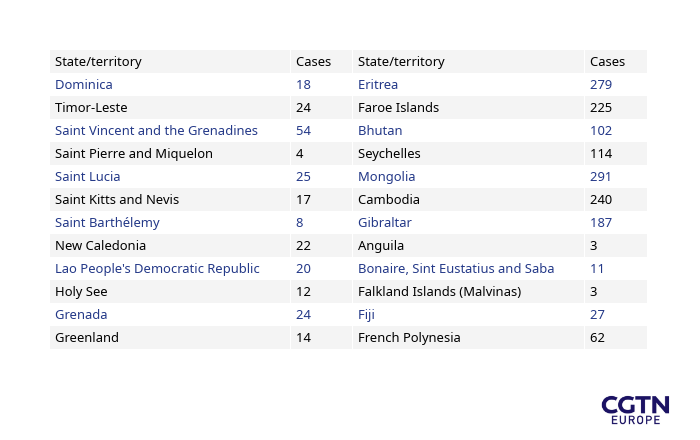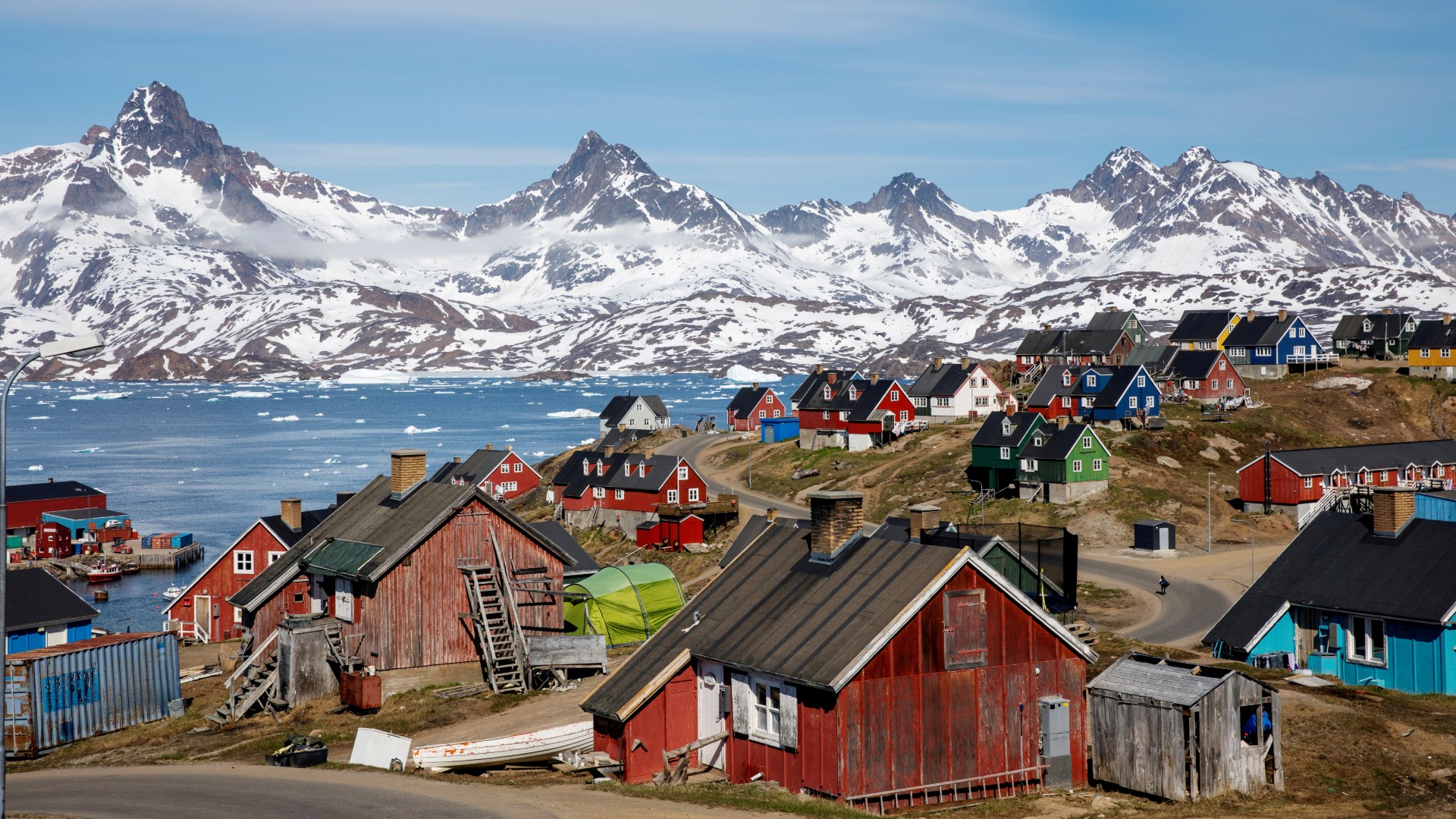Since the first outbreak of COVID-19 was recorded in the Chinese city of Wuhan back in December, there have been nearly 18 million confirmed cases of the virus and 685,000 deaths worldwide.
At least 188 countries and territories have been affected by COVID-19, as international travel saw the disease spread rapidly around the globe and force countries to implement drastic lockdowns.
On Saturday, seven months on from start of the pandemic, Vietnam became the latest country to confirm its first death from the virus, meaning there are now just 24 states or territories which are yet to record a fatality.
Many of them are remote islands, whose geographical isolation has enabled them to minimise infections to just a handful of cases.

There have been nearly 18 million confirmed cases of COVID-19 globally and 685,000 deaths, but 24 states are yet to record a fatality./CGTN
There have been nearly 18 million confirmed cases of COVID-19 globally and 685,000 deaths, but 24 states are yet to record a fatality./CGTN
But others have also benefited from innovation and quick thinking which kept the virus at bay. The Faroe Islands has recorded just 225 cases, of which 188 have so far recovered, and has been aided in its COVID-19 fight by the foresight of veterinary scientist Debes Christiansen.
Christiansen warned the government back in January of the need to prepare for the virus to arrive and set about thinking how he could use his own expertise to help. His day job, as the head of department at the National Reference Laboratory for Fish and Animal Diseases in Torshavn, sees him run a laboratory which tests salmon for viral infections.
There has been mass testing of fish in Faroese waters since 2001, when an outbreak of salmon anaemia virus ravaged the local population of salmon. This testing process inadvertently gave Christiansen many of the tools he needed to begin testing humans for the virus.
He purchased the remaining materials required to test humans from a range of suppliers and is now able to test up to 1,000 people per day at his facility. That means the country has avoided having to send tests to Denmark, which would have taken up to a week to return a result. In total, 10 percent of the country's 61,000 population have now been tested, with zero fatalities recorded.

The World Health Organization has published data showing that 24 states and territories are yet to suffer a death from COVID-19.
The World Health Organization has published data showing that 24 states and territories are yet to suffer a death from COVID-19.
Elsewhere, common sense and swift action has been key. In Dominica, the government closed its borders to tourists and Dominican citizens on March 28 when the country had just seven cases. The same ban was applied to all ships, yachts and boats other than those delivering essential food supplies, while public gatherings of more than 10 people were banned.
Pubs, restaurants and cafes were issued with guidance about new ways to serve customers, while a 10pm curfew was implemented. On July 15, Dominica announced a reopening of its borders for Dominican citizens returning home, with international travel to resume on August 15, but has vowed to close its borders until December if there is another outbreak.

Greenland's lack of healthcare facilities has seen the island adopt strict COVID-19 measures, resulting in just 14 cases and zero deaths./Reuters
Greenland's lack of healthcare facilities has seen the island adopt strict COVID-19 measures, resulting in just 14 cases and zero deaths./Reuters
In Greenland, a long and unfortunate history of deadly epidemics has prompted a strict response to the COVID-19 crisis. In the 18th and 19th century, European colonizers imported several diseases which reduced the population significantly.
After a handful of cases were recorded in the capital of Nuuk, Greenland's most populous city, in March, all entry to and from the area was banned without special permission. All borders were also closed to avoid the risk of history repeating itself.
Greenland has just one large medical facility and a handful of small hospitals, meaning it doesn't have the resources to deal with a large outbreak. Its 72 towns and villages aren't connected by railway or road, with a small number of planes and helicopters used to transport people to hospitals. The Arctic island's borders could remain shut for at least 12 months and many other smaller islands may follow suit as they look to avoid fatalities.